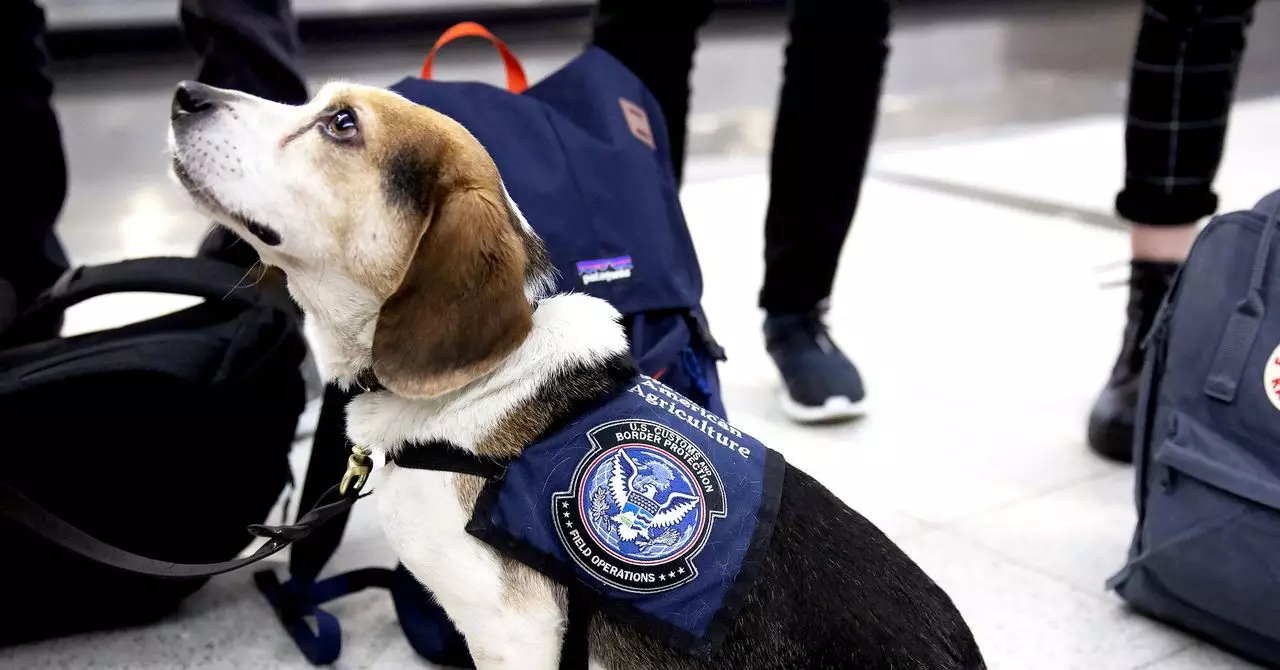In recent months, a shadow has been cast over the United States Department of Agriculture (USDA) as a troubling wave of staff reductions has left vital programs vulnerable. The abrupt termination of dedicated professionals, like Derek Copeland, a trainer at the National Dog Detection Training Center, serves as a glaring example of the ongoing crisis. Copeland was directly involved in training beagles and Labrador retrievers to detect invasive species, including the growing threat posed by the Giant African land snail, known for its potential havoc on Florida’s agricultural landscape. His departure, emblematic of broader cuts, has triggered a cascade of implications that could jeopardize the safety and quality of the nation’s food supply.
Effects on Agricultural Safeguarding
The USDA’s recent staff reductions are not merely bureaucratic decisions; they signify a seismic shift in how agricultural monitoring and pest management will be conducted. With an estimated 20% of trainers and critical support personnel terminated, the extent of expertise lost is unfathomable. Programs dedicated to inspecting imports, which safeguard against pests and diseases through meticulous checks, have particularly suffered, causing alarm among professionals in supply chain management. Workers who are now left behind are dealing with intensified workloads, often akin to “skeleton crews” that are ill-equipped to manage the complexities of modern agriculture.
The loss of seasoned inspectors, entomologists, and taxonomists, who have dedicated years to honing their craft, places immense pressure on remaining staff, many of whom possess advanced academic qualifications. The assertion that artificial intelligence could bridge this expertise gap is dangerously naïve; pest detection is not just about following algorithms but also involves nuanced judgment and deep knowledge of biology—skills that no automated system can replicate.
The Impending Threat of Invasive Species
The implications of these staff reductions extend beyond immediate operational inefficiencies; they also usher in the potential for an invasion of non-native species. The farming community has already been grappling with existing challenges, such as the Asian longhorn beetle and lantern flies, which have wreaked havoc on local agriculture. The recent personnel cuts exacerbate the risk of other invasive species breaching U.S. soil, potentially leading to agricultural catastrophes. Supply chain experts have pointed out that the U.S. is at the crossroads—on one hand, a pronounced decrease in the capacity to conduct thorough inspections, and on the other, an increasing influx of goods that may harbor hidden threats.
Such administrative decisions not only threaten the agricultural security of the nation but could also see consumers paying the price. With reduced inspections, food products destined for grocery stores may face delays in ports, resulting in spoilage and financial loss. This chain reaction could lead to skyrocketing grocery prices, further straining households that are already reeling from economic uncertainty.
Voices of Concern: Insights from Industry Experts
Industry voices are ringing alarm bells, warning that the current situation is fraught with dangers that could undermine the foundational aspects of U.S. food safety and security. Mike Lahar, a regulatory affairs manager, underscores the irreplaceability of skilled personnel within the USDA. “These aren’t your average people,” he states, emphasizing the critical nature of these roles. The expertise lost, he argues, cannot simply be substituted with lower-cost labor or technology. Those responsible for protecting the food supply from diseases and pests must possess an understanding that goes beyond basic training.
Veterans in the supply chain industry, like software CEO Joe Hudicka, further caution against the perilous trajectory set in motion by these cuts. His perspective illustrates how logistical repercussions go hand-in-hand with agricultural inspections. The very essence of maintaining operational efficiency in food chain management is at risk as ports run thin on inspectors, leading to delays and waste.
In an era defined by globalization and interconnectedness, the ramifications of the USDA’s decisions are far-reaching. As the nation confronts various systemic threats—be it invasive species or disruptions in food supply chains exacerbated by other issues like bird flu—federal management policies must prioritize reinvestment in human expertise for the safeguarding of agriculture and food security. If left unchecked, the current trajectory sets the stage for a possible agricultural crisis that could affect millions.

